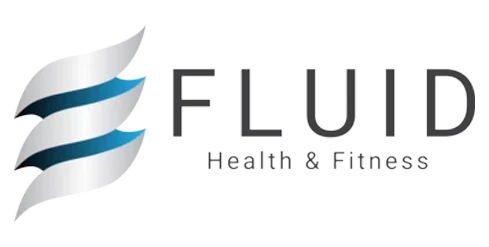
At Fluid Health and Fitness, we believe in educating our members beyond reps and sets. Our mission is to empower you with the science behind movement, metabolism, and performance. In this blog, we’re unpacking a few high-level questions that many of our advanced members and clients ask when they get into structured cardiovascular training or metabolic testing.
Let’s dive into three foundational topics:
- What are the optimal VO2 max zones for different populations?
- Which CO2 and gas exchange data points signal red flags for cardiovascular or respiratory disease?
- Is there a physiological “floor” to heart rate zones, and can zones be achieved at arbitrarily low heart rates?
VO2 Max Ranges by Population: How Do You Compare?
VO2 max is the maximum rate your body can consume oxygen during intense exercise. It’s measured in milliliters of oxygen per kilogram of body weight per minute (ml/kg/min), and it’s one of the most reliable indicators of cardiorespiratory fitness.
Here’s how VO2 max typically breaks down:
| Category | VO2 Max (ml/kg/min) | Description |
|---|---|---|
| Sedentary | Men: 25–35 / Women: 20–30 | Basic fitness. High risk of chronic disease. |
| Average Fitness | Men: 35–45 / Women: 30–40 | Can handle daily life; moderate activity. |
| Recreational Athlete | Men: 45–55 / Women: 40–50 | Regular training; high base fitness. |
| Trained Athlete | Men: 55–65 / Women: 50–60 | Amateur competition level. |
| Elite Athlete | Men: 65–75+ / Women: 60–70+ | Professionally trained athletes. |
| World-Class | Men: 75–90+ / Women: 70–85+ | Top 0.01% of athletes worldwide. |
The training zones based on VO2 max:
- Zone 1: 50–60% VO2 max (recovery)
- Zone 2: 60–70% (aerobic base, fat oxidation)
- Zone 3: 70–80% (tempo/lactate management)
- Zone 4: 80–90% (threshold)
- Zone 5: 90–100%+ (VO2 peak)
CO2 Data Points That Signal Cardiovascular or Respiratory Red Flags
During VO2 or metabolic testing, we can learn a lot from how your body processes carbon dioxide (CO2). These are the top metrics we evaluate:
Ve/VCO2 (Ventilatory Equivalent for CO2)
- Normal: <34 at threshold
- Red Flag: >40 at rest or threshold
- Implication: Ventilatory inefficiency. Strong predictor of heart failure or pulmonary hypertension.
Ve/VO2 (Ventilatory Equivalent for Oxygen)
- Normal: 20–30 (submax), <35 (peak)
- Red Flag: >40 at submax
- Implication: Aerobic inefficiency, poor oxygen utilization, possibly early onset acidosis.
RER (Respiratory Exchange Ratio = VCO2 / VO2)
- Normal: 0.7 (rest), 0.85–0.9 (AT), >1.0 (max effort)
- Red Flag:
-
1.1 at submax = poor metabolic control
- <1.0 at peak = failure to reach effort, potential cardiac limitation
-
PetCO2 (End-Tidal CO2)
- Normal: 35–45 mmHg
- Red Flag: <34 at rest or no rise during exercise
- Implication: Poor perfusion, CHF, or hyperventilation pattern
Are There Heart Rate Floors for Training Zones?
Yes—each zone has a practical and physiological “floor.” You cannot stimulate meaningful metabolic adaptations unless the heart is working above a minimum threshold.
Here are general zone floor estimates for most adults:
| Zone | HR Floor (bpm) | Physiological Event |
| Zone 1 | ~90–100 | Recovery, parasympathetic activity |
| Zone 2 | ~100–115 | Maximum fat oxidation, mitochondrial stimulus |
| Zone 3 | ~120–135 | Lactate accumulation begins |
| Zone 4 | ~140–155 | Anaerobic threshold (OBLA – onset of blood lactate ) |
| Zone 5 | >160 | VO2 peak, max sympathetic output |
The minimum HR required to enter Zone 2, for example, won’t be 70 bpm unless you’re extremely deconditioned, elderly, or clinically limited. Metabolic demand simply isn’t high enough to drive the adaptations Zone 2 is known for (fat oxidation, capillarization, etc.).
Putting It All Together: Functional + Clinical Screening
For a truly accurate picture of your health and capacity:
- Measure VO2 max, Ve/VCO2, Ve/VO2, RER, and PetCO2
- Cross-reference your heart rate zones with these markers
- Look for early spikes or flattened responses in CO2, which can be early signs of cardiovascular or respiratory issues
- Always validate zones with gas exchange data, not just formulas like 220-age
Final Thoughts
Whether you’re optimizing performance or screening for dysfunction, data doesn’t lie. Our advanced metabolic testing protocols at Fluid Health and Fitness combine performance science with medical insight to give you the full picture.
If you want to explore your numbers—or uncover what might be holding you back—schedule your next VO2/metabolic analysis with us today.
Train smart. Move well. Live fully.



